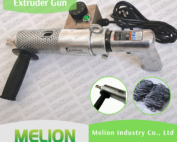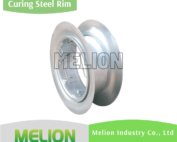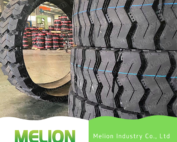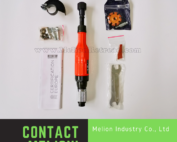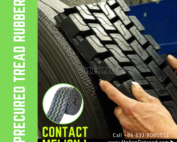ASK & WE ANSWER
FREQUENTLY ASKED QUESTIONS
Frequently Asked Questions
TBR Tires
| Tire Size | Ply Rating | Standard Rim | Outer Diameter (mm) | Section Width (mm) | Load Index & Speed Rating | Max Load (KG) Single/ Dual | Max Pressure (KPA) |
|---|---|---|---|---|---|---|---|
| 385/65R22.5 | 20 | 11.75 | 1072 | 389 | 160K | 4500 | 900 |
| 315/80R22.5 | 20 | 9.00 | 1076 | 312 | 157/153L | 4125/3650 | 860 |
| 315/70R22.5 | 20 | 9.00 | 1014 | 312 | 154/150M | 3750/3350 | 900 |
| 295/80R22.5 | 18 | 9.00 | 1044 | 298 | 152/149M | 3550/3250 | 900 |
| 295/75R22.5 | 16 | 9.00 | 1014 | 298 | 146/143L | 3000/2725 | 830 |
| 285/75R24.5 | 16 | 8.25 | 1056 | 283 | 147/144L | 3075/2800 | 830 |
| 275/70R22.5 | 16 | 8.25 | 958 | 276 | 148/145M | 3150/2900 | 900 |
| 265/70R19.5 | 16 | 7.50 | 867 | 262 | 140/138M | 2500/2360 | 775 |
| 255/70R22.5 | 16 | 7.50 | 930 | 255 | 140/137M | 2500/2300 | 830 |
| 245/70R19.5 | 16 | 7.50 | 833 | 248 | 135/133M | 2180/2060 | 830 |
| 235/75R17.5 | 16 | 6.75 | 797 | 233 | 132/130M | 2000/1900 | 775 |
| 225/70R19.5 | 14 | 6.75 | 811 | 226 | 128/126M | 1800/1700 | 760 |
| 215/75R17.5 | 16 | 6.00 | 767 | 212 | 126/124M | 1700/1600 | 700 |
| 205/75R17.5 | 14 | 6.00 | 753 | 205 | 124/122M | 1600/1500 | 750 |
| 13R22.5 | 18 | 9.75 | 1124 | 320 | 154/151L | 3750/3450 | 850 |
| 12R22.5 | 17 | 9.00 | 1084 | 300 | 152/149M | 3550/3250 | 930 |
| 12.00R24 | 20 | 8.50 | 1226 | 313 | 160/157K | 4500/4125 | 900 |
| 12.00R20 | 20 | 8.50 | 1122 | 313 | 156/153K | 4000/3650 | 900 |
| 11R24.5 | 16 | 8.25 | 1100 | 279 | 149/146L | 3250/3000 | 830 |
| 11R22.5 | 16 | 8.25 | 1050 | 279 | 146/143M | 3000/2750 | 830 |
| 11.00R20 | 18 | 8.00 | 1082 | 286 | 152/149K | 3550/3250 | 930 |
| 10.00R20 | 18 | 7.50 | 1052 | 275 | 149/146K | 3250/3000 | 930 |
| 9.00R20 | 16 | 7.00 | 1018 | 258 | 144/142K | 2800/2650 | 900 |
| 9.5R17.5 | 18 | 6.75 | 842 | 240 | 143/141M | 2725/2575 | 930 |
| 8.25R20 | 16 | 6.50 | 974 | 236 | 139/137K | 2430/2300 | 930 |
| 8.25R16LT | 16 | 6.50H | 860 | 230 | 128/124K | 1800/1600 | 770 |
| 7.50R16LT | 14 | 6.00G | 802 | 210 | 122/118L | 1500/1320 | 770 |
| 7.00R16LT | 14 | 5.50F | 778 | 202 | 118/114K | 1500/1320 | 770 |
| 6.50R16LT | 12 | 4.50 | 755 | 182 | 110/105K | 1060/925 | 670 |
Off-the-Road Tires
| Tire Size | Ply Rating | Standard Rim | Overall Diameter (mm) | Section Width (mm) | Max Load (KG) 50kmh/ 15kmh | Inflation Pressure |
|---|---|---|---|---|---|---|
| 17.5-25 | 20 | 14.00/1.5 | 1398 | 445 | -/5440 | 280 |
| 20.5-25 | 20 | 17.00/2.0 | 1548 | 520 | 5900/6580 | 350 |
| 23.5-25 | 20 | 19.5/2.5 | 1673 | 595 | 6680/7460 | 280 |
| 14.00-24 | 16/24 | 10.00 | 1370 | 375 | 4760/6030 | 420/630 |
| 16.00-25 | 20/28 | 11.25/2.0 | 1546 | 430 | 6220/7360 | 420/560 |
| 26.5-25 | 16/20 | 22.00/3.0 | 1750 | 675 | 11500/13200 | 275/350 |
| 18.00-25 | 20/28 | 13.00/2.5 | 1615 | 495 | 7230/8810 | 350/490 |
| 29.5-25 | 16/22 | 25.00/3.5 | 1875 | 750 | 12900/15000 | 250/325 |
| 15.5-25 | 16 | 12.00/1.3 | 1275 | 395 | 3850/6750 | 325/525 |
| 14.00-25 | 20 | 10 | 1318 | 366 | 5150/9500 | 575 |
| 16/70-24 | 10/14 | 13.00 | 1175 | 410 | 4750/5650 | 325/450 |
The above data is for reference only.
Tire parameters may be slightly different due to various tread designs from different manufacturers.
We often hear about TBR tires, PCR tires, and OTR tires, but what do they exactly mean ? Now engineers from MELION INDUSTRY company will explain you what is the difference between TBR, PCR and OTR tire:
What’s TBR Tire ?
TBR is the short for Truck and Bus Radial tires, so we can see that TBR tires are mainly used for Truck and Bus vehicles, sometimes we also call TBR tire as commercial tire because the TBR tires are used for commercial vehicles. Meanwhile, the structure of TBR tire is all steel wire, so the TBR tire has better loading performance.
TBR Tire sizes
TBR tires sizes mainly are 6.50R16LT, 7.00R16LT, 7.50R16LT, 8.25R16LT, 9.00R20, 10.00R20, 11.00R20, 12.00R20, 11R22.5, 12R22.5, 13R22.5, 315/80R22.5, 12.00R24, 325/95R24, 295/80R22.5, 11R24.5, 12R24.5, 425/65R22.5, 445/65R22.5 etc.

What’s PCR & PLT tire ?
What’s PCR & PLT tire
PCR is short for Passenger Car Radial tires, so we can see that PCR tires are mainly used for car vehicles, sometimes we also call PCR tire as car tire directly becasue PCR tires mainly are used for car vehicles.
PLT tire is a wider concept, which includes PCR and Light Truck tire, but here Light Truck tire is little different with above TBR tire, because the PLT tire’s structure is semi-steel, which semi-steel structure PLT has more comfortable driving experience.
PCR and PLT tires main sizes
PCR tire segment has many sizes, such as 185/65R14, 195/70R15, 235/75R15, 215/60R16, 225/65R17, 225/45R18, 255/60R19, 275/55R20 etc.
PLT tire sizes include above PCR sizes and light truck tire sizes, such as 6.50R16LT, 7.00R16LT, 7.50R16LT, 8.25R16LT etc., but here this light truck tire structure is semi-steel.
What’s OTR tire ?
What’s OTR tire
OTR tire is short for Off-the-Road tire, which OTR tire mainly used for the Giant truck vehicles in mine area.
What’s OTR tire sizes
OTR tire sizes minely include 16.00R24, 16.00R25, 17.5R25, 18.00R33, 20.5R25, 23.5R25, 26.5R25, 29.5R25, 21.00R33, 21.00R35, 27.00R49, 30.00R51, 33.00R51, 36.00R51, 40.00R57, 35/65R33 etc.

Now you have some understanding of TBR, PCR and OTR.
In addition, no matter what kind of tires, the tread wears out after driving tens of thousands of kilometers or the tire has reached the end of its lifespan after few years running. Do not throw away the retired tires because it will cause environmental pollution. Do you know that all tires can be retreaded and recycled?
Contact us now to retread your tires!
Many customers asking for a cost analysis of retreaded tires, such as how much Precured Tread Rubber and Cushion Gum are required for processing tire retreads. Now MELION’s engineers share the following data based on our experience:
| Tire Size | Tread Width (mm) | Tread Length (mm) | Tread Weight (KG) | Gum Weight (KG) |
|---|---|---|---|---|
| 315/80R22.5 | 240/250/260 | 3280 | 14.0 | 1.4 |
| 295/80R22.5 | 230/235/250 | 3200 | 13.2 | 1.3 |
| 275/80R22.5 | 205/215/220 | 3100 | 12.2 | 1.2 |
| 295/75R22.5 | 205/215/220 | 3095 | 12.2 | 1.2 |
| 12R22.5 | 220/230/240 | 3280 | 13.6 | 1.3 |
| 11R22.5 | 210/220/230 | 3200 | 12.6 | 1.2 |
| 10R22.5 | 195/205/210 | 3070 | 12 | 1.2 |
| 12.00R20 | 220/230/240 | 3400 | 14.2 | 1.6 |
| 11.00R20 | 200/210/220 | 3280 | 13 | 1.3 |
| 10.00R20 | 190/200/210 | 3185 | 11.5 | 1.2 |
| 9.00R20 | 180/190/195 | 3080 | 10 | 1.1 |
| 8.25R20 | 160/170/180 | 2960 | 7.8 | 0.8 |
| 8.25R16 | 160/170/180 | 2550 | 6.5 | 0.6 |
| 7.50R16 | 150/160 | 2400 | 5.7 | 0.5 |
| 7.00R16 | 140/150 | 2350 | 5 | 0.5 |
| 6.50R16 | 130/135 | 2310 | 4 | 0.5 |
Note: The above data is for your reference only, please refer to the actual processing data.
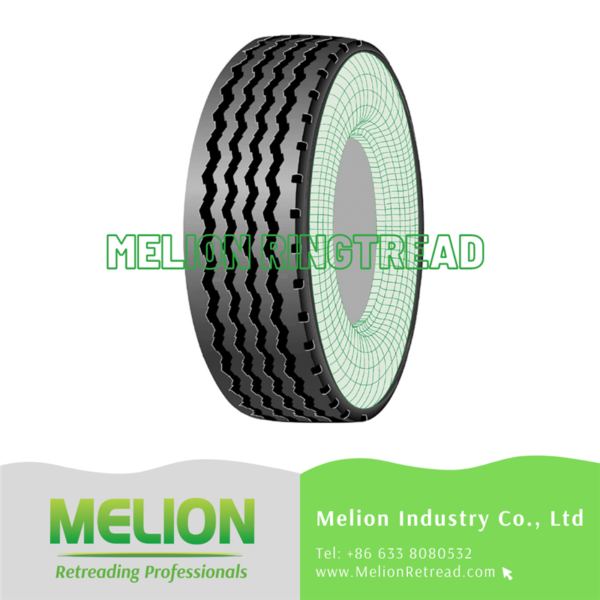
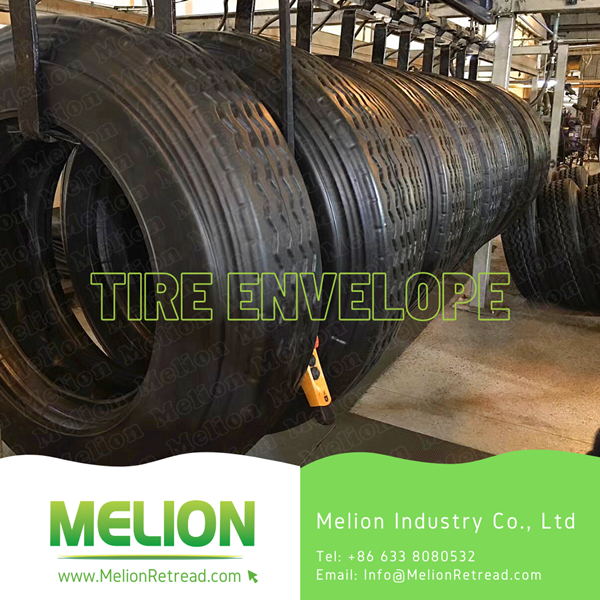
Complete Tire Retreading Machines
It usually takes 40-50 days to produce the goods of full set tire retreading machines.
Precured Tread Rubber
We can ship Precured Tread Rubber within a week if your order we have in stock.
If we dont have in stock, delivery time depending quantity of purchase order.
Many customers asking what is the cost by retreading one tire and how much margin I can make after I running a tire retreading factory?
Engineers from MELION INDUSTRY herewith list you cost breakdown according to experience in our own tire retreading workshop.
for example, retreaded tire 12.00R20” and 315/80R22.5”
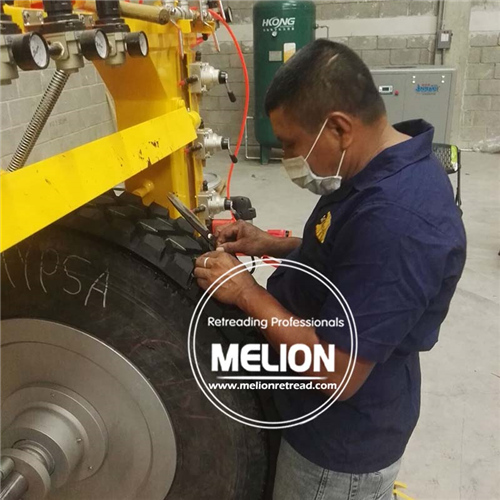
The Retreaded Tire Cost Breakdown
| Tire Size | Old Tire Casing | Tread Model | Tread Weight | Cushion Gum | Utilities Bill | other cost | Total Cost |
|---|---|---|---|---|---|---|---|
| 12.00R20 | $28 | 230 mm | 13.8 kg | 1.6 kg | $1.2 | $5 | $70 |
| 315/80R22.5 | $28 | 250 mm | 14.0 kg | 1.5 kg | $1.2 | $5 | $75 |
USD to RMB Exchange Rate: 6.35
The cost breakdown is for reference only, because the tire casings price and processing cost will vary from country to country.
Even same tire size, the weight differs from their various patterns design.
For example, precure tread rubber for 1100R20”, its weight may be 12 kg, 12.5 kg, 13 kg, 13.6 kg depending on different pattern thickness.
Our Tread Rubber is designed one piece for one tire use and packed in one roll by plastic film for easy transport.
For convenience, we have marked the length, width and weight of each each Precure Tread Rubber in our brochure.
Feel free to ask our sales for Brochure now !
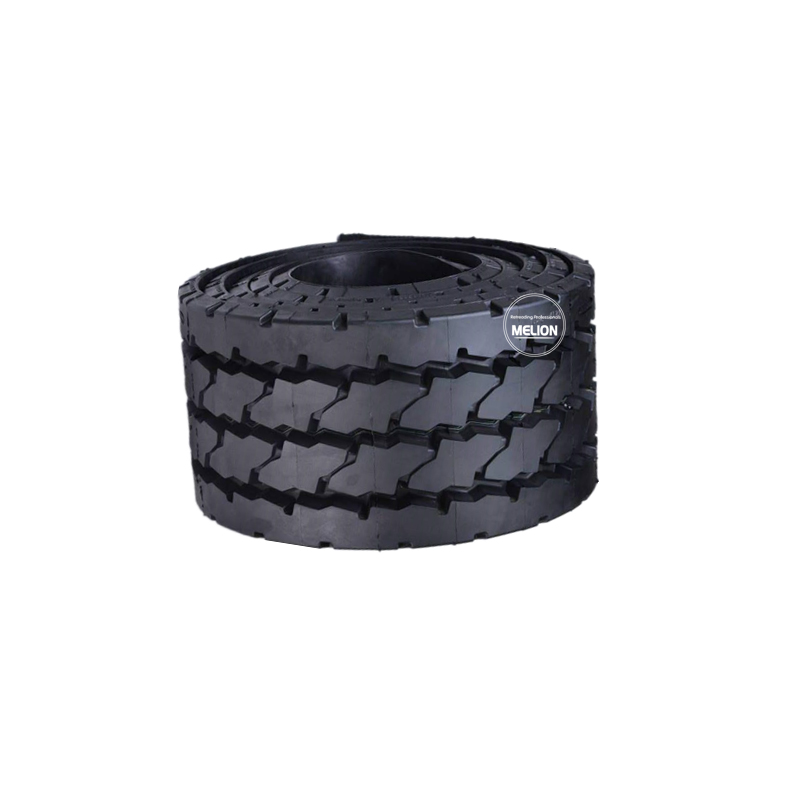
Definition of Retread
Retread, also known as “recap”, or a “remold” is a re-manufacturing process for tires that replace the tread on worn tires. Retreading is applied to casings of spent tires that have been inspected and repaired. It preserves about 90% of the material in spent tires and the material cost is about 20% compared to manufacturing a new one.
Applications in United States
Some applications for retreaded tires are airplanes, racing cars, buses and delivery trucks. Use of retreaded tires was common historically, but as of 2008, it was seldom used for passenger vehicles, mainly due to discomfort on the road, safety issues and cheaper tire brands surfacing on the market. About 17.6 million retreaded tires were sold in North America in 2006.
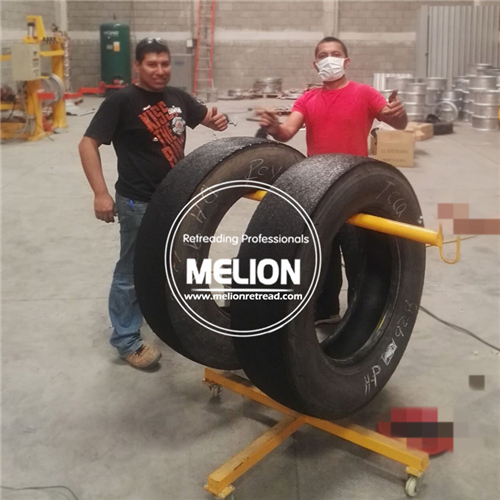
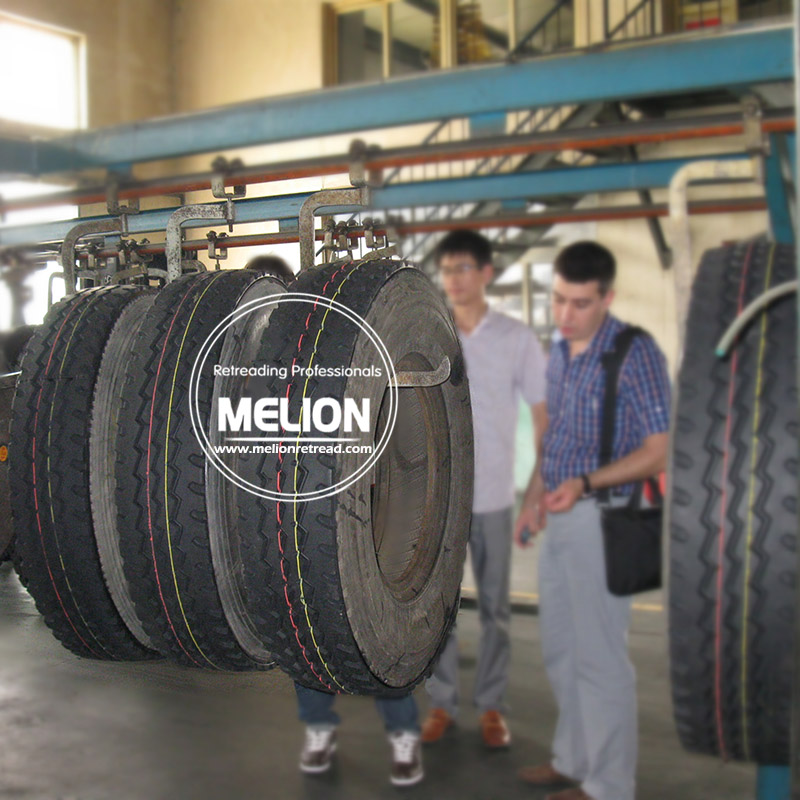
Process
There are two main processes used for retreading tires, called Mold Cure and Pre Cure. Both processes start with the inspection of the tire. Some casings are repaired and some are discarded. Tires can be retreaded multiple times if the casing is in usable condition. Tires used for short delivery vehicles are retreaded more than long haul tires over the life of the tire body. Casings fit for retreading have the old tread buffed away to prepare for retreading.
Pre cure ( “COLD” Retread )
Previously prepared tread strip is applied to tire casing with cement. This method allows more flexibility in tire sizes and it is the most commonly used method, but results in a seam where the ends of the strip meet.
Mold cure ( “HOT” Retread )
Raw rubber is applied to the tire casing and it is then placed in a mold where tread is formed. A dedicated mold is required for each tire size and tread design.
read more From Wikipedia
If you order complete set of tire retreading machines ( eg. 12 tires capacity of autoclave with other main machines) with some precured tread rubber and cushion gum, it usually loaded in one 40 high cube container and we ship it from China to your nearest sea port.
If you order complete set of tire retreading machines (eg. 24 tires capacity of autoclave with other main machines ) with some precured tread rubber and cushion gum, it usually will be loaded in 1*40 HQ and 1*20Gp containers.
If you order one single machine such as Tire Buffing Machine, it will be packed in ply-wood case and deliver by LCL (less than container load).
For more packing and delivery details, please consult our sales staff…

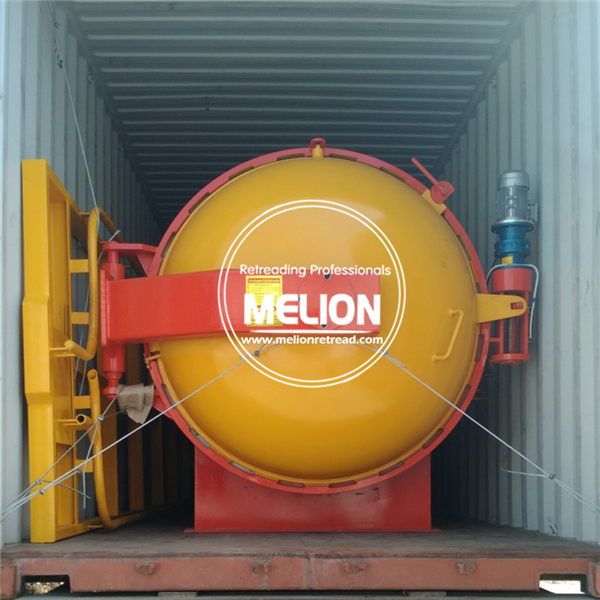

Yes, as long as you purchased Melion’s tire retreading equipment, we could send our Engineers to customer’s factory for on-site installation and training services. It usually takes 7 to 15 days or maybe longer depending on the situation.
The Engineer’s round-trip air tickets, accommodation and other expenses caused during the travel need to be paid by the customer.
Retreading is a safe, efficient and environmentally friendly way to breathe new life into worn tires: The “worn-out” tread of the tire is replaced with a brand-new one and this means that the tire can be used again!
Unfortunately, however, not every tire can be retreaded. The requirements are:
The tyre was used correctly in its “first life”, driven with the right air pressure and treated with care.
The tyre’s frame, the carcass, is not seriously damaged.
In addition, whether a retreadable carcass can be reused depends on the type of tyre. The following retreading limits apply:
- Car tyres: 1 time
- Light truck tyres: Generally 1 time
- Truck tyres: 1 to 3 times
- Aircraft tyres: Up to 12 times
40% deposit to start production, and balance payment by T/T before shipment.
There are two techniques for retreading:
- Hot Retreading
- Precure Retreading (Precure Retreading also called ” cold ” retreading )
“HOT” Retreading:
Hot Retreading involves the vulcanization of a tire in a mold at a temperature of around 150 °C. The tread and the sidewall veneer of the tire are made up of non-vulcanized rubber compounds. The shape and tread of the tire are created in the heating press.
Arguments in favor of hot retreading:
- Suitable for all tire applications, including car and aircraft tires.
- Material costs are lower than the more complex products required for precure retreading.
- Hot retreading also allows extensive repairs to be carried out on the tire carcass (e.g. belt replacement).
- Even bias-ply carcasses can undergo hot retreading without any problems.
Points to note:
- A separate mould is required for each tread and size. This requires a high level of investment in a range of moulds, which will be need to be regularly updated.
- The production process needs to be designed for large numbers of tires. This calls for a central production workshop, an extended customer area and therefore brings with it relatively high logistics costs.
“Cold” retreading:
Pre-cure or “Cold” retreading involves vulcanization without a mould at a temperature of between 95 °C and 115 °C. The tire is put together using a pre-vulcanized tread liner (= new tread) and a non-vulcanized cushion gum layer. The bond between the carcass, the cushion gum and the precured tread is created in an autoclave. Pre-cure retreading has become fully established in the truck tires sector since the introduction of radial tires in the mid-1960s.
Arguments in favor of pre-cure retreading:
- Less investment is required on the part of the retreading plant (no expensive moulds) and lower follow-up costs, since it is the material supplier who updates the range of moulds.
- A wide range of tread types are available, allowing the optimum tread to be selected for the tire application.
- The comparatively low investment costs involved mean that decentralized, smaller production units can be operated. This means lower logistics costs and makes the operator more flexible and closer to his customers.
- The pre-cure retreading process is kind to the carcass, since vulcanization temperatures are lower and put less strain on the rubber-metal bonds in the carcass. Heat build-up in the tire, rolling resistance and other tire properties are often easier to assess than with hot retreading.
- With comparable tread geometries, the running performance of a pre-cured retread is often better than a hot retread and the same as an equivalent new tire.
Points to note:
- Pre-cure retreading requires high-quality carcasses.
- Material costs are higher than hot retreading material, since the pre-cured tread is already vulcanized and is therefore a more heavily-processed product.
- Labor costs per retread are higher than for hot-retread truck and bus tires.
The proportion of retreads on the replacement car and truck tire market in Europe still varies widely.
For car tires, retreads make up only 1-2% of the market in Switzerland and the Netherlands, but this figure rises to over 20% in Scandinavia. In Germany, retreads account for around 10% of car tires, a proportion which rises to 20% for winter tires.
For truck tires, the proportion of retreads is much higher, ranging from around 40% in Spain to over 70% in Finland. In Germany and France, retreads make up around half of the replacement tire market for trucks. Over 15 million truck and bus tires are used every year across the EU. Of these, around 8 million are new tires, and over 6 million are retreads.
Retreading plays a particularly important role in aircraft tires, which are subjected to extreme stresses. Aircraft tires have to withstand huge strain at speeds of over 250 km/h, and undergo retreading after around 150 take-off and landing manoeuvres. Retreading can take place up to twelve times. The testing procedures are naturally very stringent here, and safety takes top priority.
High-quality retreading is the alternative to new tires for commercial vehicles, since it offers safety, top running performance and an excellent cost-benefit ratio. More and more consumers are recognizing and coming to appreciate the positive image of high-quality retreads.
Request a Callback
Fill in the form below to request a callback to discuss your tire retreading project.
Order List
Check out what is necessary order lists for your new tire retreading factory ?
HAPPY CUSTOMERS
Testimonials

Ronald
“Thank you for providing me with the Tire Retreading Turnkey Projects. So far, the equipment is working very well and my client is very satisfied.
Meantime, i got some good Chinese friends. Buy me more beers next time when i come to China, CHEERS.”

Viktor
“I visited many companies for retreading supplies and finalised to deal with Melion Industry because its good quality and excellent service. My tire factory is running well now and also I’m very happy to be the sales agent of Melion products in Russia.”

Evans
“Your machines are very good, thank you so much for your continuous technical support! We are getting more customers and our tires sold very well in the market. I am planning to buy another bigger Curing Chamber to increase production next year.”
Request A Free Quote

